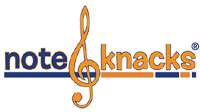 In our final installment of the STEM to STEAM series, I wanted to highlight the connections between disciplines, although, in an education world where math is from ~ let’s say 9-10 and language arts is from 10-11 etc…,is it really worth the trouble and is it even possible? (I do think that schools will be changing schedules and teaching models to create a more project based learning environment, but that is for another post…)
In our final installment of the STEM to STEAM series, I wanted to highlight the connections between disciplines, although, in an education world where math is from ~ let’s say 9-10 and language arts is from 10-11 etc…,is it really worth the trouble and is it even possible? (I do think that schools will be changing schedules and teaching models to create a more project based learning environment, but that is for another post…)
The geniuses in our world are always those that see connections where others don’t. In his article “How Geniuses Think”, Michael Michalko talks about how geniuses are not determined by one’s IQ, rather the way they look at the world around them and what they do with that information. As one would expect, it is in making relationships and connections where there seems only chaos or no connection at all. Click HERE to read the full article ~ It really is worth the read!!
This brings me to STEAM ~ Science, Technology, Engineering, the Arts, and Mathematics. How do the Arts, and more specifically music, fall into this? How can music help students connect to the other subjects and how can those other subjects connect students to music?
Joseph Vincelli, a saxophonist composer outside of Dallas came up with a way to connect it all with a very cool tool! It is called the Rhythm Clock. (photos above) Click HERE for more info! It is a teaching tool that makes you think! (…and of course I am so excited about the use of Note Knacks colors!!) and see the whole picture!! This tool shows:
- Degrees
- Fractions
- Notation (both notes and rests)
- Percentages
- Clock positions
- North, South, East, West
On the back, it goes on to show these relationships in chart form:
- Shape
- Quantity
- Piece name
- Color
- Fraction
- Note symbol
- Rest
- Degrees
- Percent
- Decimal
- Money
I know that many teachers have used some of these ideas to teach notation and here it is all spelled out in a simple to use manipulative! I am too excited about it!!
It comes with a DVD that shows how to create rhythms on the clock where 12 is the starting point and one moves in a clockwise direction to read the rhythm. It allows one to see rhythm in another way and is especially helpful for all of you that use pie charts to teach rhythm…. J
You can use it in your classroom and do your own thing with it, or better yet, utilize last week’s lesson “How To Get Them On Board” and encourage classroom teachers to use it in their rooms, as they see fit. Again, they are in no way obligated to teach rhythm. The benefit will be that kids will see Note Knack colors and make the connection.
However, if you want to take it a step further, you can make a game out if it! In true STEAM fashion, you can have the students create a 4/4 rhythm using a code, with the back of the Rhythm Clock as its key. A student can choose to write it all in degrees ~ 180 + 90 + 45 + 45 = half note, quarter, eighth, eighth, OR all in percentages ~ 50% + 25% + 12.5% + 12.5% (same rhythm) etc.. or one could mix it up ~ 180 + 25% + 0.125 + 1/8th. (again, same rhythm). Kids could make them as long or short as they want and then switch with their neighbors to work them out! The kids will have a blast trying to trick their friends, while making connections between disciplines! (You can purchase your very own clock HERE!)
How have you been able to work together with the classroom teachers in your building? Let us know what you think in the comments below!
